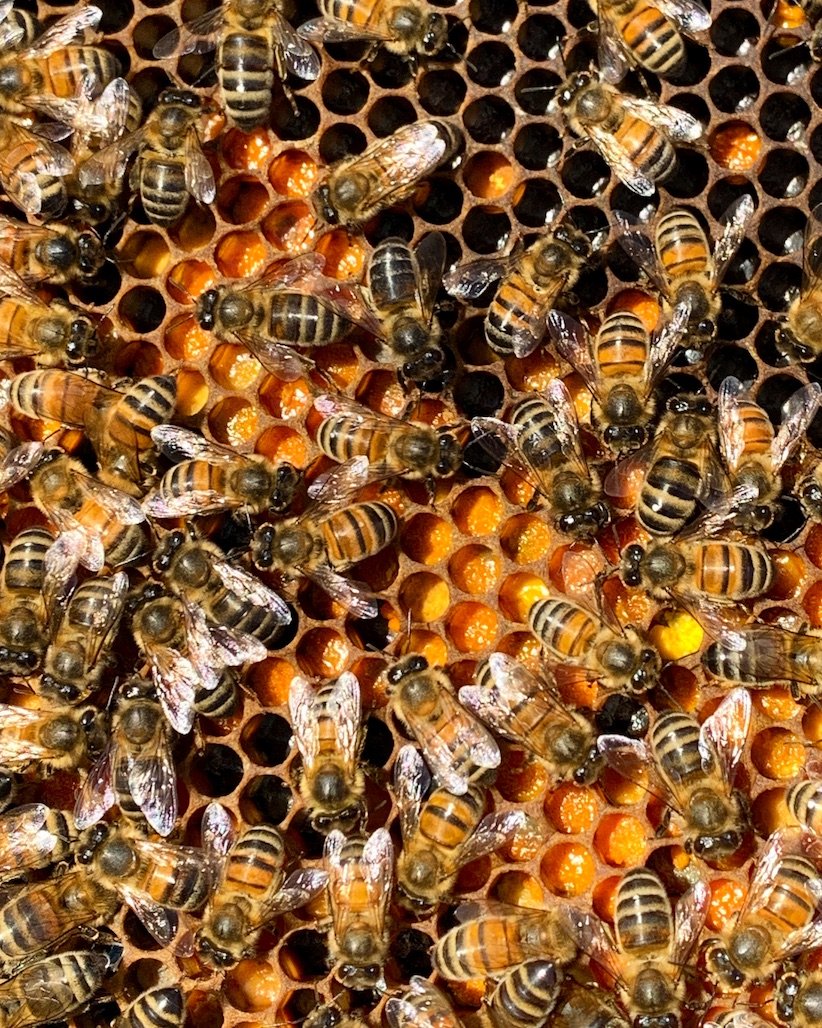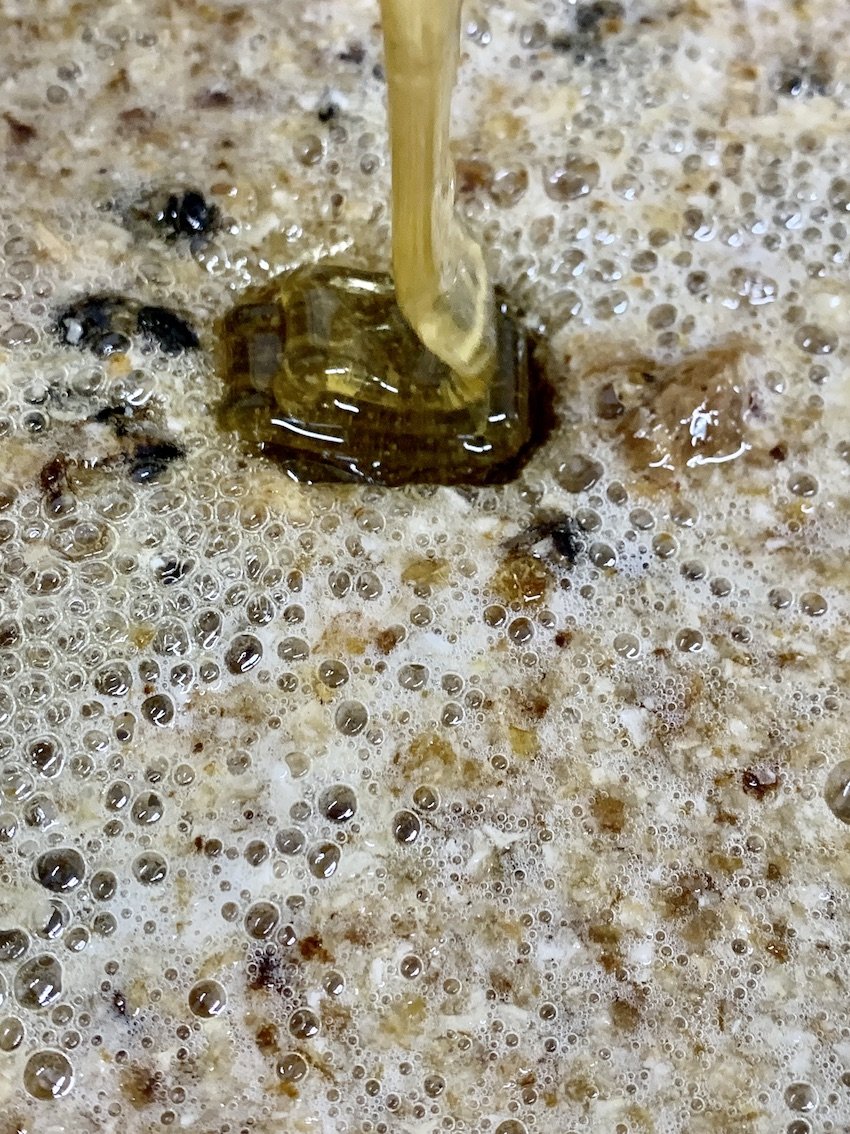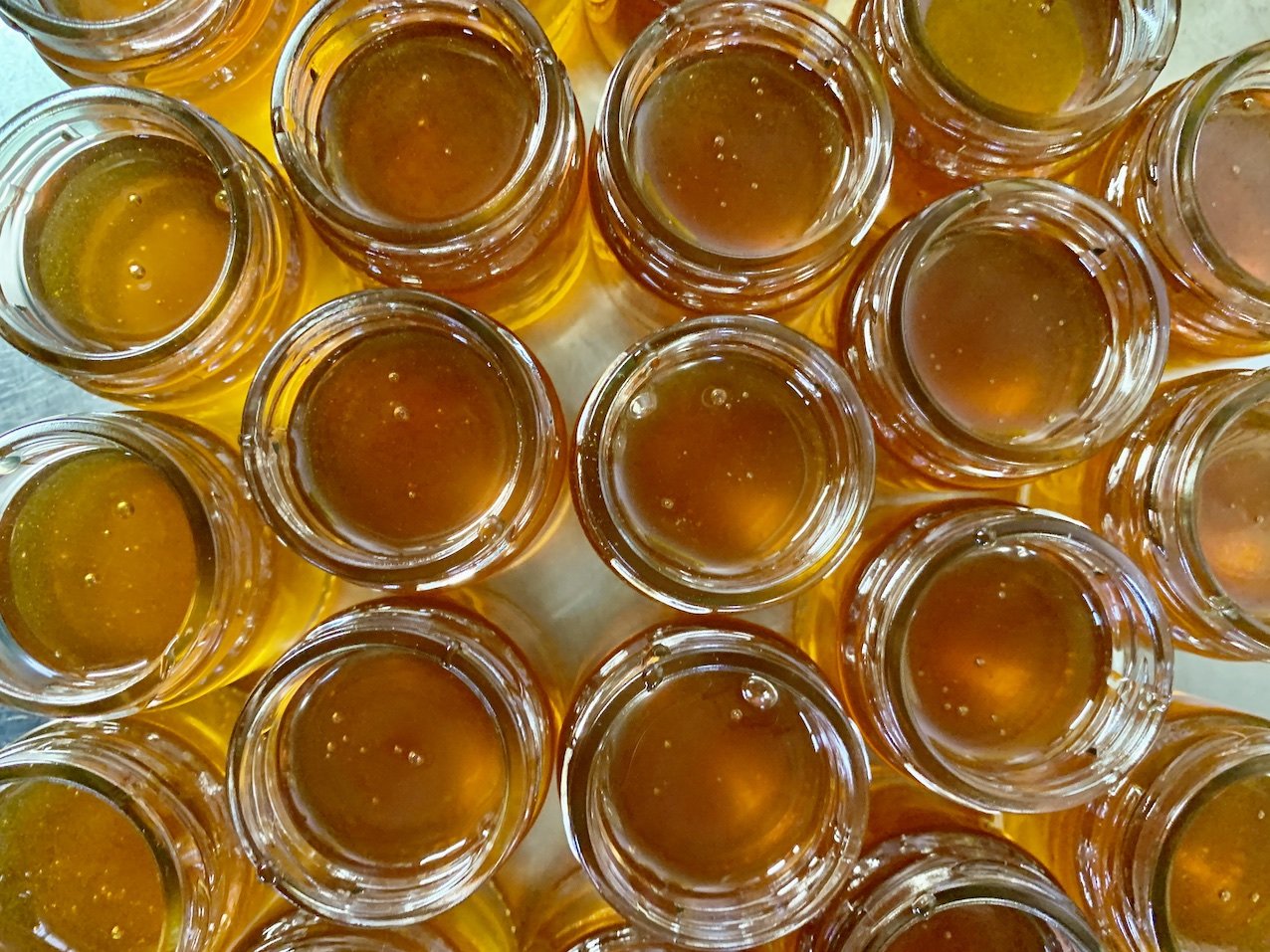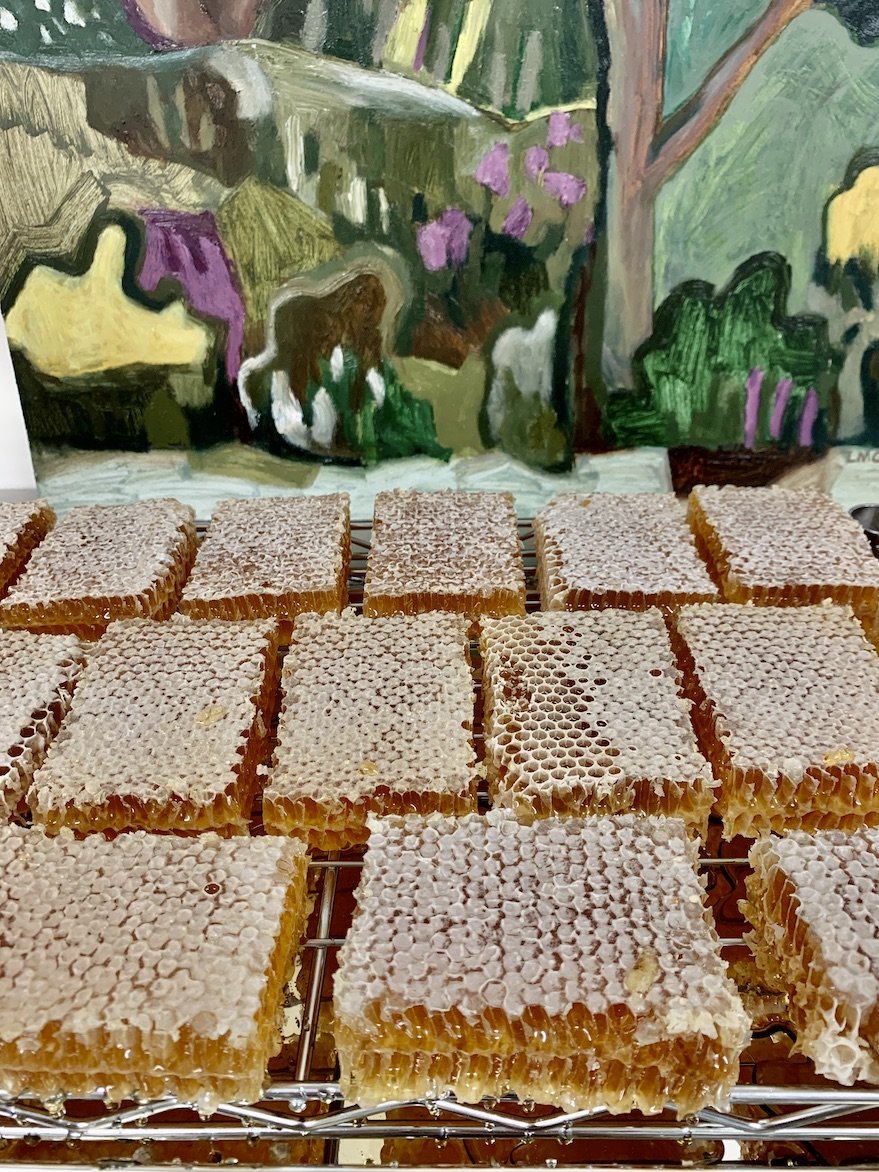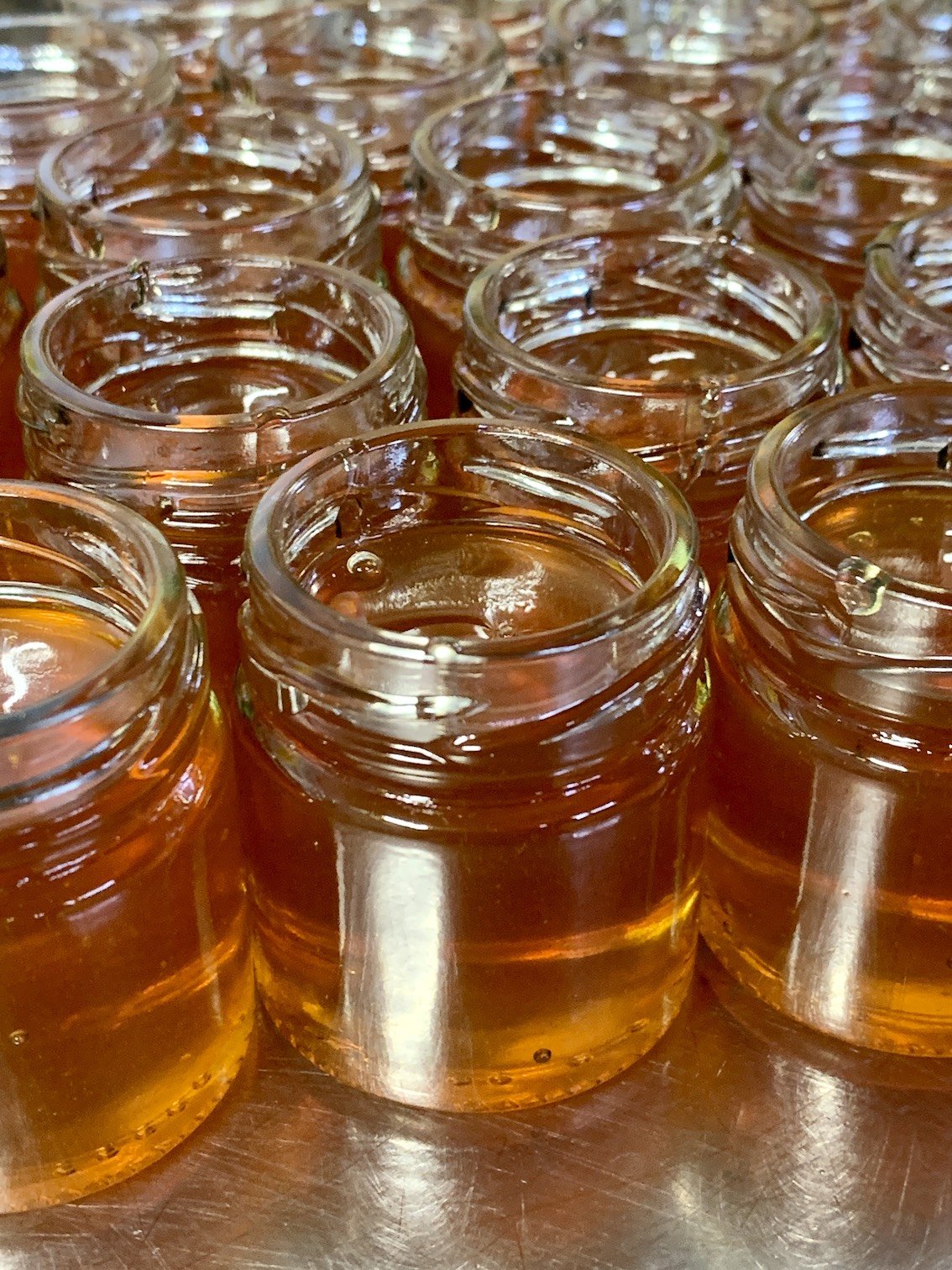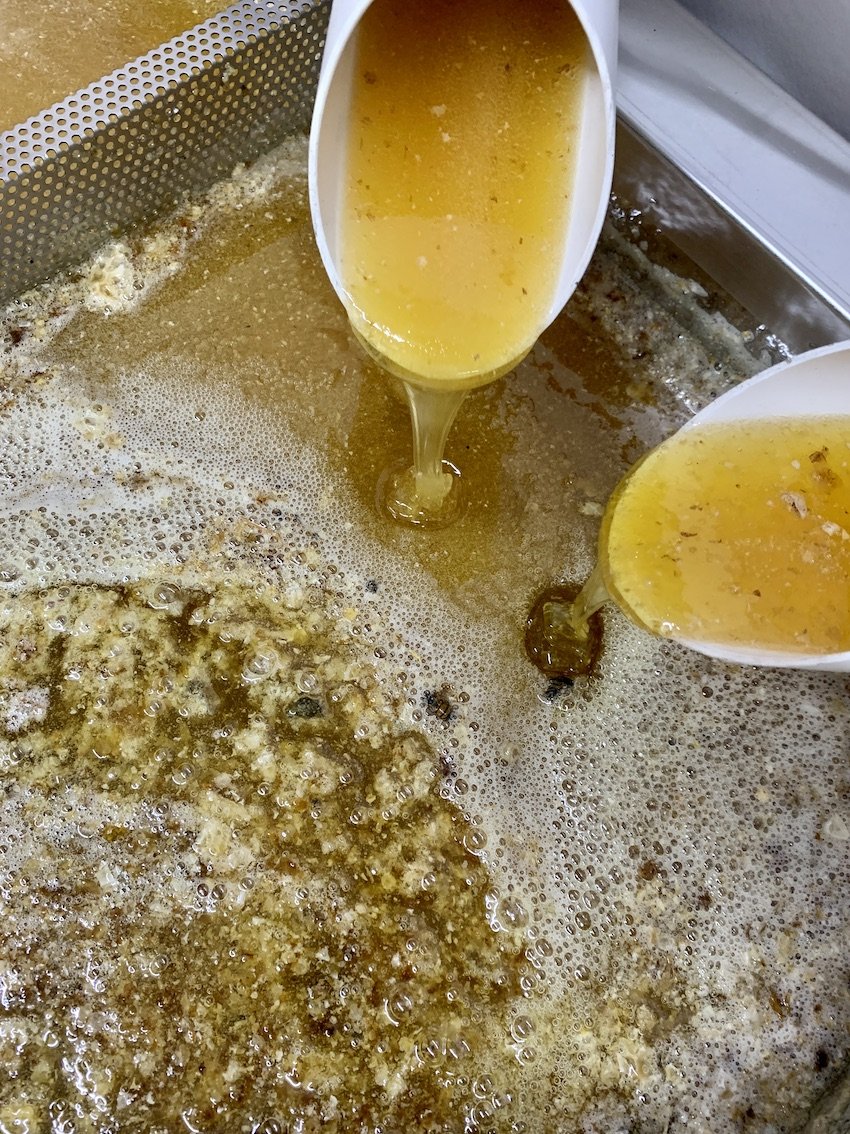
How honey is made…
Honey is made (only by honeybees) by drinking nectar from flowers (their source of carbohydrates), carrying it back to the hive in their special honey stomach (called the “crop”, where enzymes are added). They then transfer it to a receiving bee inside the hive who adds additional enzymes and places it in the honeycomb cells for storage.
The enzymes work to change the chemical structure and pH of the substance, as does a process of fanning the honey (something the bees do with their wings), to help evaporate some of the water (nectar is about 70% water, honey becomes around 17% water), after which a wax cap (made from nectar in special glands located in the bee’s abdomen) is placed over the top of the honey, allowing for a much longer storage life of the final product.
(photos ©Rebecca Campbell)
Honey has been gathered and consumed by mankind for thousands of years, both for its taste as well as its health benefits.
Raw Honey (unheated and unfiltered) contains vitamins and mineral, enzymes, amino acids, phytonutrients, and other healthy elements that can help maintain a healthy immune system.
Most honey contains numerous benefits such as antibacterial, antiseptic, antimicrobial, antioxidant, anti-inflammatory and antifungal properties. These qualities can help treat burns and promote wound healing, relieve sore throats and coughs, boost immune function, aid with digestion, keeps blood glucose in check (providing slow-release energy), is good for skin health, can help sleep behaviour, and may even help lower blood pressure, improve blood fat levels, regulate your heartbeat, and possibly prevent the death of healthy cells in the body.
NOTE: It is suggested to refrain from feeding honey to children less than 12 months old due to underdeveloped digestive systems, increasing the risk of infant botulism. (Europeans do not believe in this warning as there are very few cases of this occurring, so please do your research to form your own opinion.)

The Taste of Leatherwood
(as described by our “super taster” friend, Jessica Russ)
Leatherwood honey tastes as wild and astonishing as the ancient rainforests that endure on Tasmania’s rugged and wind-blown Southwest coast.
Unmistakably aromatic, the perfume of this honey will hit you with the first uncapping of the lid. A bouquet of deep and strange aromas starts with candied citrus and sharp musk while giving way to wood and earthy spice - think warming cinnamon and pepper with an after note of old world rose, sun-warmed nectarines ripe and heavy with sweetness. The strong sharp musky flavours will catch you by surprise and curiously fill your nose, throat and ultimately your entire head in what has been described as a cloud of flavour.
Not straight-up sweet, leatherwood is a fascinating, complex and unique flavoured honey with layers of surprises that combine to create an entire experience… all on the tip of a teaspoon.
Leatherwood honey lingers long on the palate, whispering of the very scent of the tiny white blossoms the bees have sought out and returned to their hive heavy with plundered nectar.
Few humans are lucky enough to have walked deep into the wilds and stood awestruck beneath a mighty leatherwood tree in full summer bloom, the air filled with the heady intoxicating scent of leatherwood nectar, the relentless buzz of bees working the compliant wide open flowers and hundreds of pure white petals fluttering in slow motion to the forest floor… An experience only reserved for intrepid fearless beekeepers or adventurous explorers taking paths less travelled - for mere mortals, uncapping the honey pot is the next best thing.


